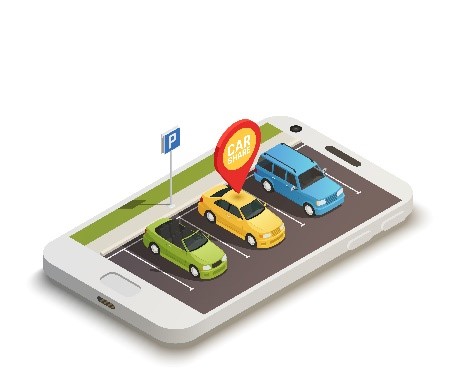
How different modes of transport are suited during and for a post COVID scenario
Until and unless, we see hostile aliens landing up on our shores, Covid-19 or the Coronavirus Pandemic will be the defining event of our time. The pandemic has tanked economies, led to a death toll of 957,000 and infected 30.8 Million people and created mass confusion where everyone is still figuring out the best way to deal with the virus and its effects.
In our daily lives, following are some of the changes that we have encountered:
- Majority of employees are working from home and Zoom is the new normal in daily interaction
- Families are spending time together since schools and offices have closed doors leading to closer family ties (though divorce rates in some countries have gone up. Can’t avoid your spouse 24/7!)
- Commuting has reduced by almost 70% across the world and we eagerly look forward to grocery trips as means of an escape
- No longer can we grab a drink at our trusty pubs with friends and vent about the long hard day but resort to drinking parties over Zoom calls
(To the Astrologer who said 2020 is going to be our year, we want our money back!)
Across the world there are strict guidelines of staying home, working from home, limiting interaction with people and going out only for essential errands. No one knows how long these measures will last and what the new normal will look like.
Even after the strict guidelines, there are times when one needs to travel around the city for various reasons. For example, you might need to make weekly trips to check up on your parents and ensure that they have all that they need, you might have to take a family member to see a doctor or bring home an entire week’s grocery (no hoarding toilet papers!). For those who own a car, it’s a quick trip from your driveway to your destination and back home!
But what about those who don’t own a car or a bike and rely on public transport, car-pooling and ride-sharing? How safe are these means of transport?
Car-pooling
Car-pooling, achieved main-stream status due to cheap fares on Grabshare or Uberpool, is banned by ride-sharing companies in order to comply with social distancing measures as well as to keep people safe.
Car-pooling in times of a global pandemic does come with risks since you could be traveling with someone who is infected and maybe unaware of it.
Such instances will only create new clusters by spreading it to more people. Hence, it’s a precaution taken by ride-sharing companies to halt car-pooling options. In Singapore, action will be taken against drivers who continue to carpool as it is considered an offense under the measures to control the spread of virus.
Public Transport
While functioning across majority of countries, it is discouraged to utilize public transport since people are in close proximity and at a higher risk of spreading the virus. In a bus or subway, it is practically very difficult to maintain six feet distance between people. While public transport is cheap and Governments are taking efforts to disinfect buses and subways regularly, the risk is quite high.
Surfaces such as handles, seats and escalator handrails can host viruses and infect people when they touch these surfaces and subsequently touch their eyes, nose or mouth. People are aware of these risks and hence, avoiding public transport as much as possible. As a result, utilization of public transport has fallen by ~71% in Singapore and the Land Transport Authority (LTA) has reduced the frequency of buses and trains.
Taxis
Cabs maybe expensive for a ride to the grocery store but are much safer compared to public transport. Given that you are in proximity with only the driver and no one else, the risk is much lesser as compared to a crowded bus. Companies such as Grab, Go-Jek and ComfortDelGro are all ensuring that their drivers stay safe by not driving if they feel unwell, educating them about the precautions in term of sanitizing the car and providing means to ensure safety. If you do need to travel somewhere in a cab, make sure you wear a mask and sanitize your hands after your trip.
Car-sharing
Like taxis, car-sharing is a safer bet for transportation. The main benefit is the reduced interaction in car-sharing. When someone opts for a car-share on Drive lah, the person rents the car for a couple of hours or days. As a result, the renter is not in close proximity to anyone else in the car and can go about his/her tasks.
If we look at the end-to-end process for Drive lah, there is no contact between parties when car-sharing.
A renter selects the car on the platform, makes payment online, proceeds to the location where the car is parked, and uses ‘Drive lah Go’ (key-less access feature) to unlock the car and return the car to the same location once the trip is done. In the entire process there is no need to physically interact with anyone else.
Drive lah has also partnered with Gecko Dudes, a water-less mobile car grooming company, which looks after the sanitizing needs of the car to ensure that no virus stays on the surface of the car. Users are advised to carry hand sanitizers and wipe surfaces such as steering wheel and seats to ensure safety.
Car-sharing, even in times of Covid-19, is seeing growth across countries like Singapore, Australia and USA as people feel safer due to limited physical interaction in the renting process. It is strongly advisable to stay home but if you do need to go out and need a vehicle, it is a safe option to opt for car-sharing based on limited physical interaction and measures taken by car-owners to maintain hygiene of their cars.
Also read:
11 benefits of long-term car rentals no one tells you about
Flex+:The Ultimate Solution For Your Monthly Vehicle Lease, Drive lah


